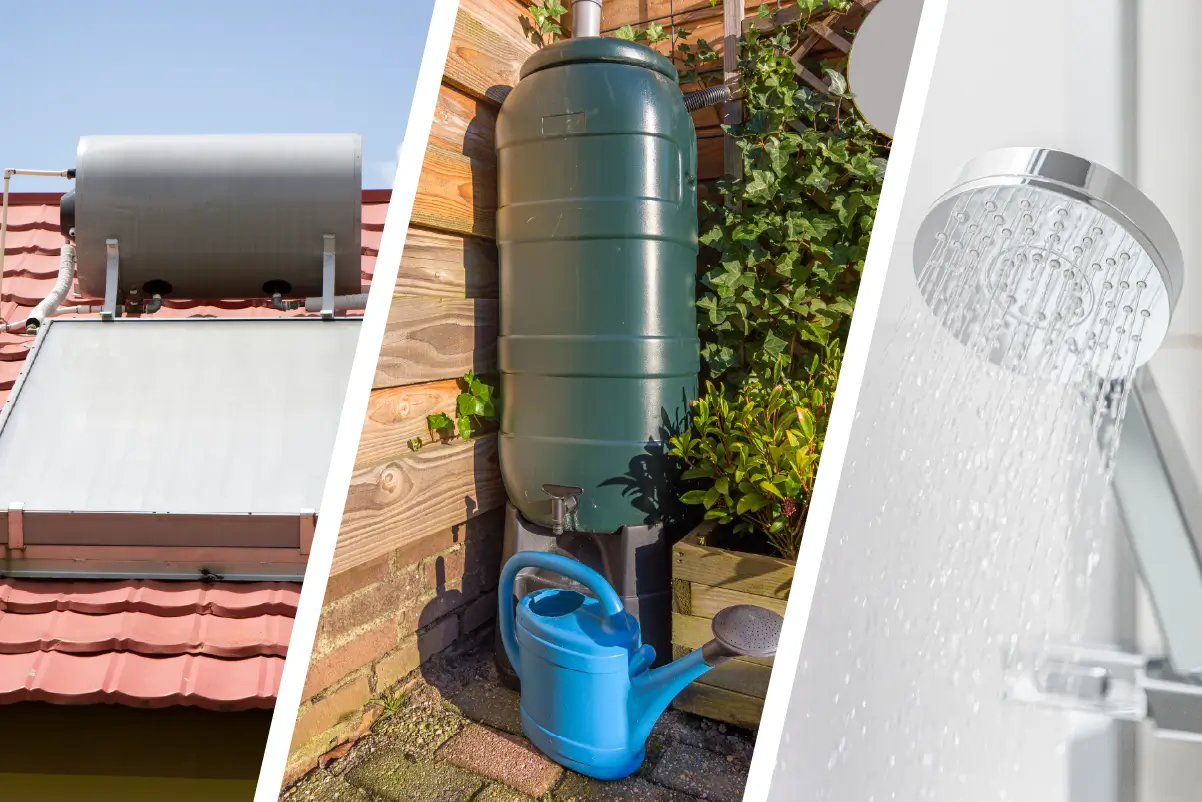
Mr. Rooter Plumbing’s highlights eco-friendly plumbing practices for homeowners.
|
Home is where the heart is, and creating a space with sustainability in mind is an important factor contributing to the overall well-being of American homeowners today. Aside from aesthetically pleasing renovations, many homeowners are emphasizing sustainability upgrades that will help reduce their carbon footprint.
One place to start is eco-friendly plumbing solutions, also known as green plumbing. We surveyed 1,066 homeowners to get a better glimpse into their journey implementing these sustainable plumbing features.
While many respondents feel these upgrades are important (with many already implementing them), some barriers prevent them from taking action.
Key findings:
- Over 1 in 5 homeowners have spent over $500 on green plumbing upgrades.
- Low-flow showerheads and faucet aerators are the top green plumbing home modifications homeowners are adding.
- Over half of homeowners say the initial cost of upgrades is holding them back from investing in eco-friendly plumbing improvements.
- Energy efficiency and cost savings on water bills are among the top reasons respondents consider implementing green plumbing practices.
Read on to learn more about green plumbing and what factors influence homeowners’ decisions to invest in these home upgrades.
What Is Green Plumbing?
Green plumbing refers to plumbing upgrades and eco-friendly practices that help conserve water and energy. These plumbing systems provide tremendous cost savings for homeowners and, best of all, help reduce your carbon footprint.
Some of the green plumbing upgrades and practices available to homeowners include:
- Tankless and solar-powered water heaters
- Faucet aerators
- Low-flow showerheads
- Dual-flush toilets
- Rainwater harvesting
Tankless water heaters, for example, heat water on demand, which significantly decreases energy consumption compared to traditional water heaters, which continuously heat water in their tanks. We discuss these popular green plumbing initiatives in more detail below.
Most Homeowners Agree That Green Plumbing Practices Are at Least Somewhat Important
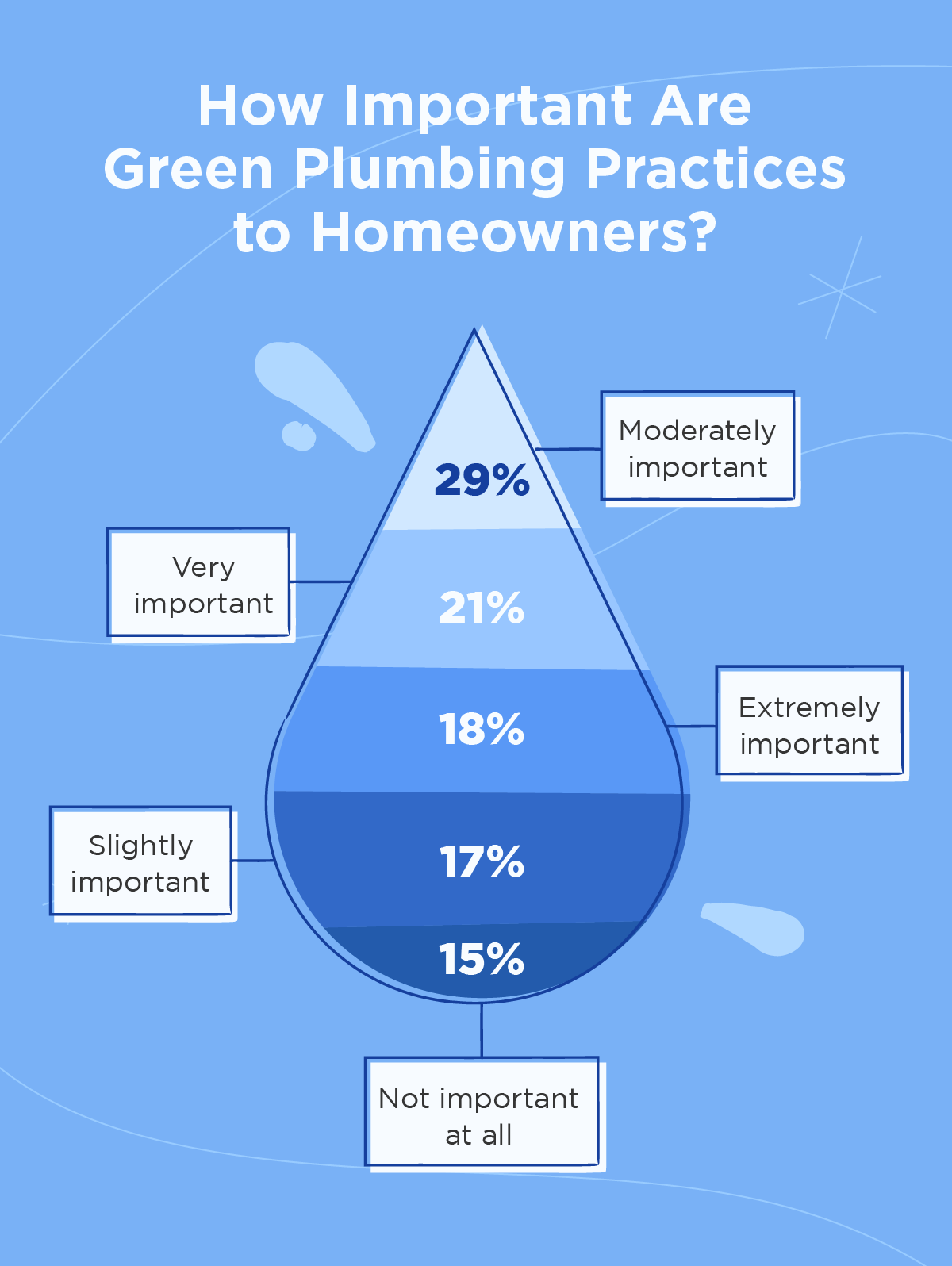
Are green plumbing initiatives even a consideration among American homeowners today? Our results say yes. Only 15% of homeowners agree that green plumbing isn’t important at all, while the rest of respondents said it’s at least slightly important.
Men (86%) and women (85%) both agree that incorporating green plumbing in their homes is important. Similarly, only 1% more women (15%) think green plumbing isn’t important compared to their male (14%) counterparts.
Over Half of Millenials and Gen X Have Already Invested in Green Plumbing This Year
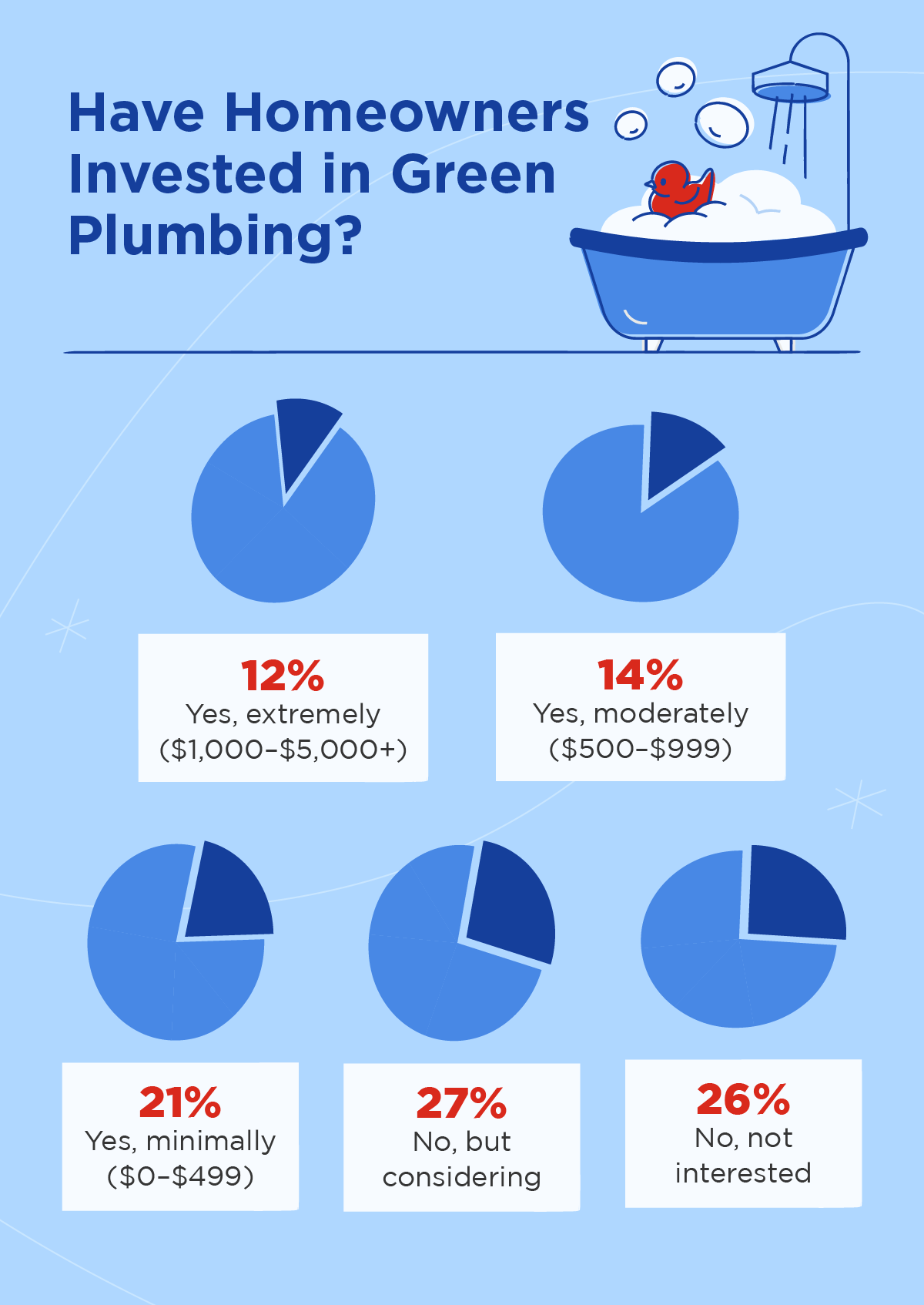
Our survey revealed that millennials and Generation X have invested the most money in green plumbing solutions this year.
- 11% of millennials and 20% of Gen X have invested $1,000 to $5,000+
- 18% of millennials and 13% of Gen X have invested $500 to $999
- 22% of millennials and 19% of Gen X have invested $0 to $499
More than a quarter of respondents say they haven’t invested in these plumbing alternatives but are considering them. And even though most of our respondents see the importance of eco-friendly upgrades, our results revealed that some just aren’t interested in adding these upgrades to their homes.
Most homeowners not interested in implementing green plumbing solutions into their homes this year are Gen Z (28%) and baby boomers (32%).
Homeowners Say Cost Savings and Energy Efficiency Have the Biggest Influence on Their Decision To Invest in Green Plumbing
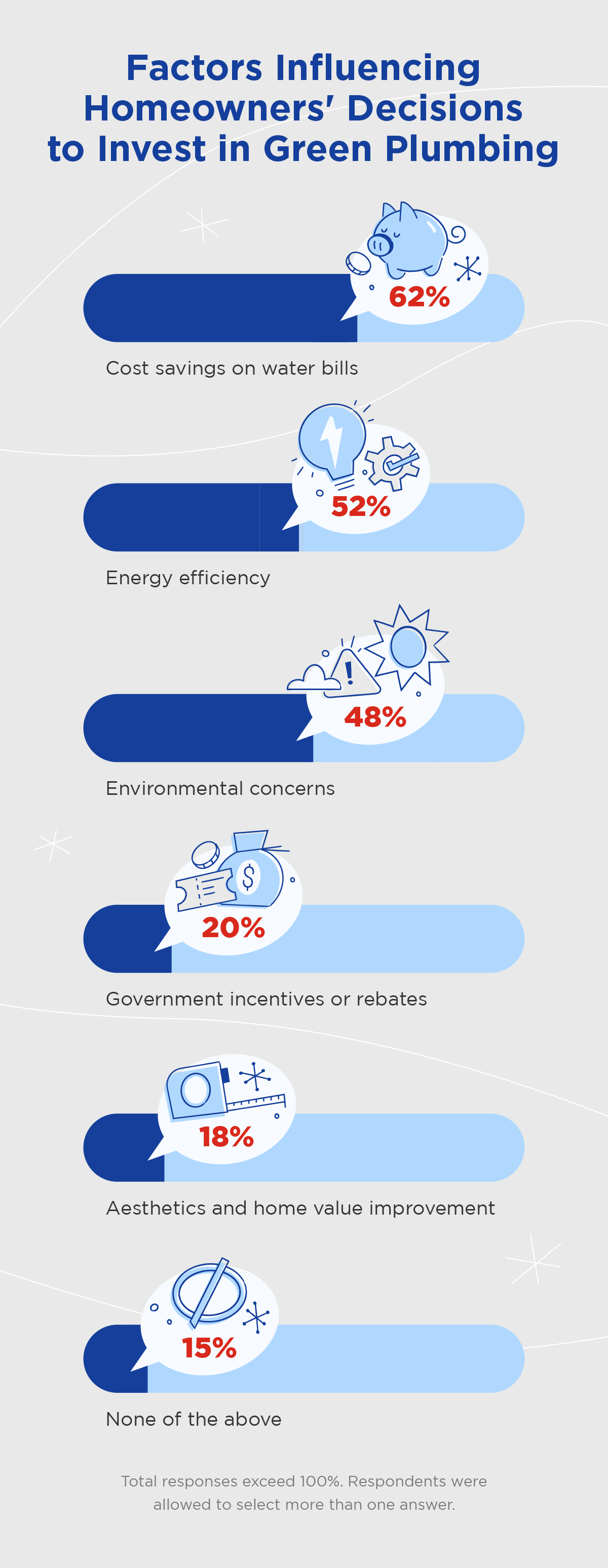
Homeownership is the American dream, but it also comes with responsibilities that extend far beyond a mortgage payment. Today, the average American pays around $429 a month for utilities.
Combined with home maintenance, homeowners insurance, and the many other expenses of owning a home, it’s no wonder the cost savings were a top influence amongst respondents in every tax bracket.
Our survey revealed that saving on water bills influences 62% of homeowners' decisions to invest in green plumbing. Energy efficiency (52%) and environmental concerns (48%) were the other top two factors.
The Initial Cost of Upgrades Is Holding Homeowners Back From Investing in Green Plumbing
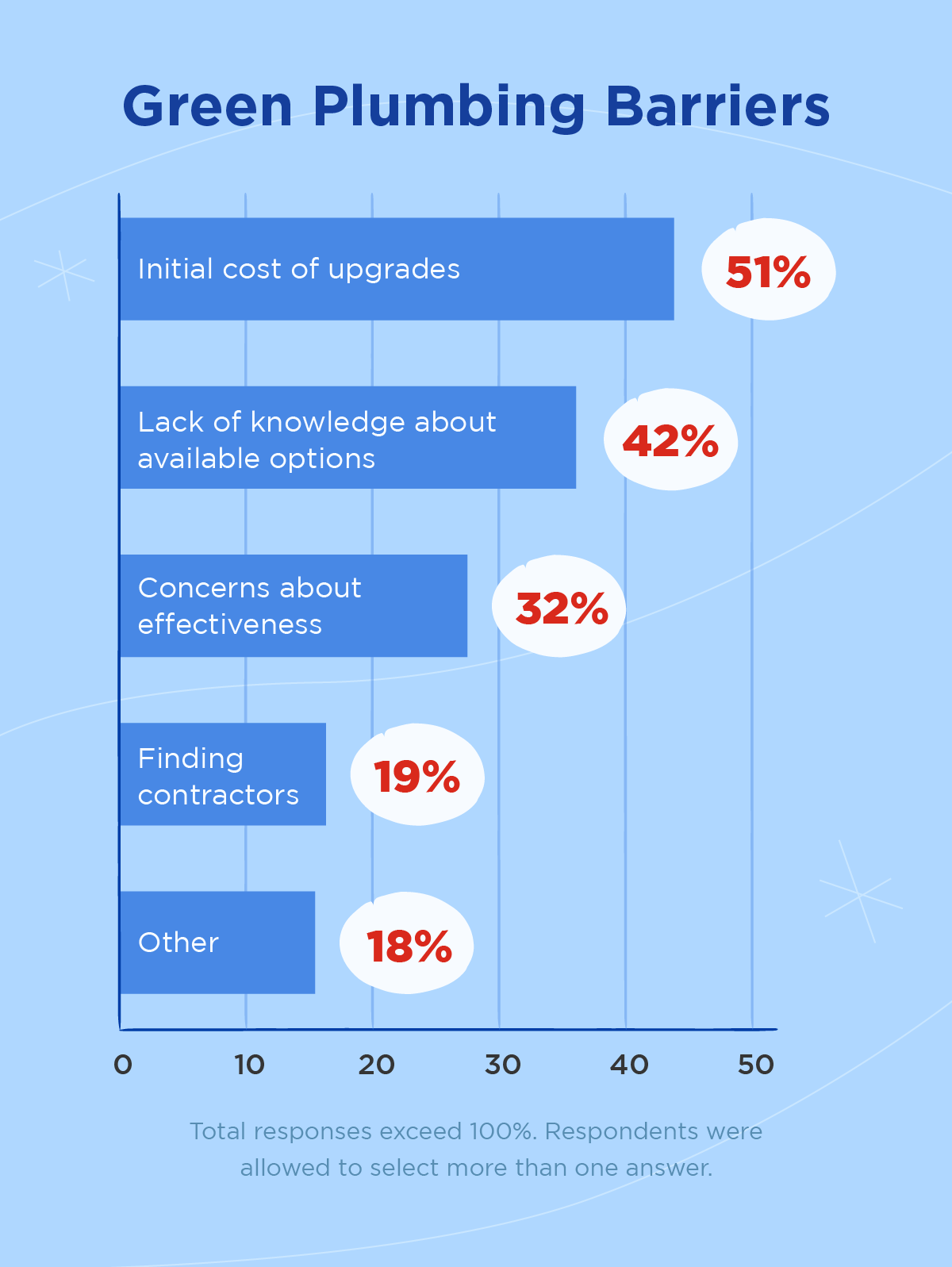
While we know the benefits of eco-friendly plumbing, the initial cost of upgrades ultimately holds more than half of homeowners back from making the switch.
Surprisingly, this was the top concern among homeowners with a household income between $150,000 to $199,999.
Lack of knowledge about available options was also a concern for 42% of respondents — the top factor preventing Gen Z from implementing these types of upgrades. Concerns about the effectiveness of green plumbing modifications (32%) and difficulty finding reliable contractors (19%) are two other barriers homeowners face.
Green Plumbing Modifications Homeowners Add To Their Homes
We asked homeowners what green plumbing home upgrades they’ve made this year (if any), and it’s clear that bathroom upgrades are the most popular — with faucet aerators and low-flow showerheads being the top answers.
Below, we’ve highlighted the most common eco-friendly plumbing upgrades homeowners are installing, as well as information on how they help save water and energy.
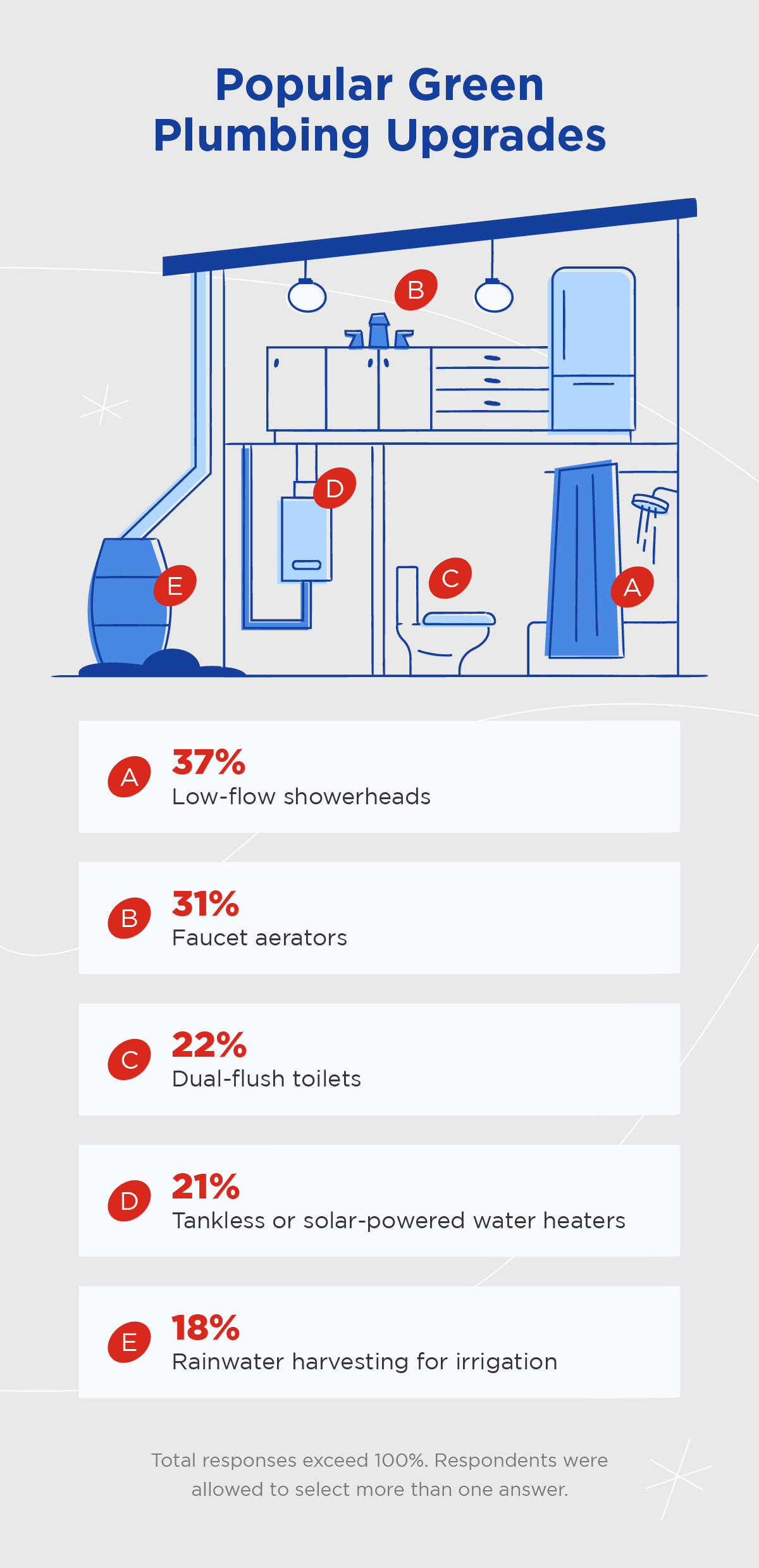
Faucet aerators
Our results show that 1 in 3 homeowners have installed faucet aerators somewhere in their homes. Aerators are mesh screens that attach to the end of a faucet. They work by adding air to the stream of water, reducing the amount of water that comes out.
Adding faucet aerators to your sinks can save the average household 700 gallons of water per year. Aside from saving water, these attachments can also help lower your energy bill since they reduce the energy needed to heat water.
Low-flow showerheads
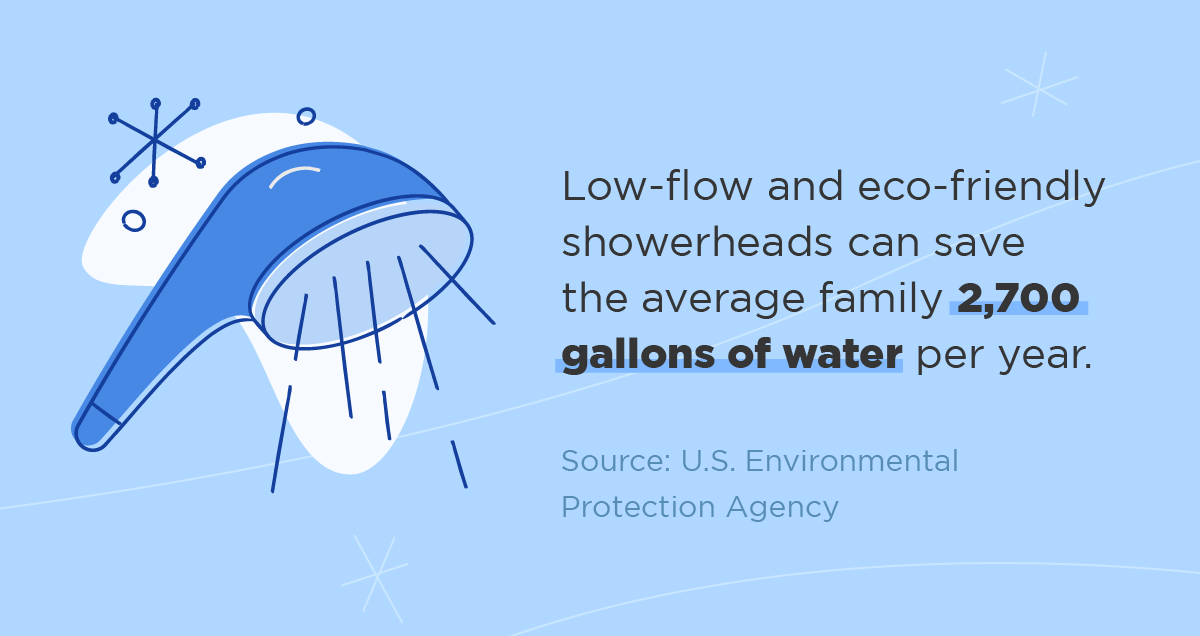
The average family uses 40 gallons of water per day from showers alone. That’s enough water to fill a standard bathtub to the brim. However, low-flow, WaterSense-labeled showerheads can help save 2,700 gallons of water per year. According to our survey results, these eco-friendly showerheads are the top green plumbing upgrade — 37% of respondents already have them in their homes.
Regular showerheads use 2.5 gallons of water per minute (GPM), while low-flow models can use as little as 1.5 GPM, making them a more efficient alternative. Low-flow showerheads reduce water usage by adding air to the water stream or forming separate streams of water without sacrificing your shower’s water pressure. Since these showerheads reduce water use, they can provide savings on your water bill and energy costs.
Dual-flush toilets
Our survey found that a little over 1 in 5 homeowners has installed a dual-flush toilet in their home. Dual-flush toilets have two flush buttons — one for liquid waste and one for solid waste — and use significantly less water per flush than traditional toilets.
Because dual-flush toilets reduce household water use and save nearly 13,000 gallons of water per year, they can help lower your water bill. According to the U.S. Environmental Protection Agency, eco-friendly toilets such as dual-flush toilets can save around $140 in yearly water costs.
Tankless and solar-powered water heaters
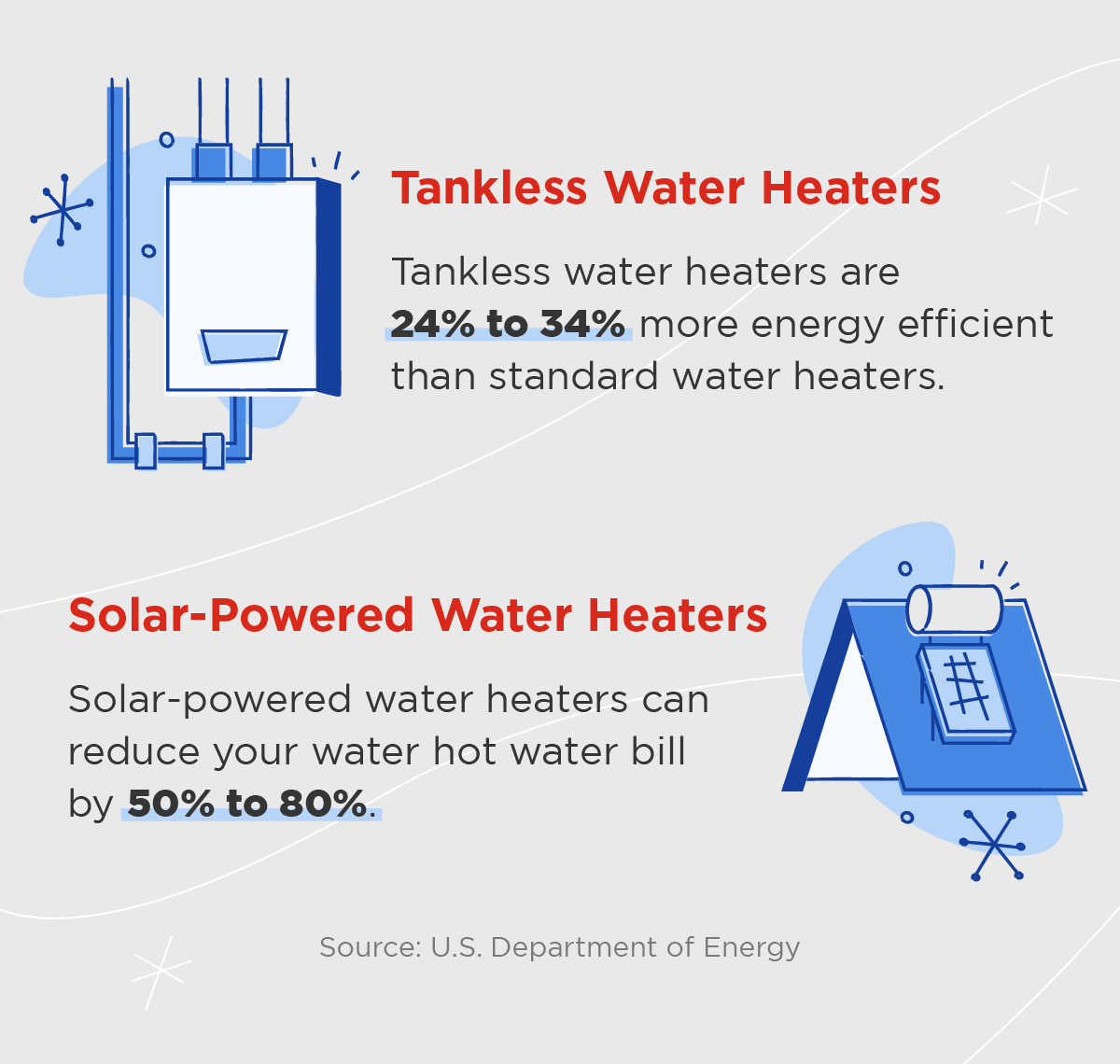
Additionally, 21% of homeowners have installed energy-efficient water heaters, including tankless and solar-powered systems.
As mentioned earlier, tankless water heaters use less energy than tank water heaters since they heat water on demand rather than continuously. These systems are generally 24% to 34% more energy efficient than conventional water heaters.
Solar-powered water heaters are also a great option and can actually drop your water heating bill by 50% to 80%. They’re also eligible for a tax credit, which 20% of our survey respondents deemed an important factor influencing their decisions to invest in eco-friendly plumbing solutions.
Rainwater for irrigation
Another way to support water conservation and save water at home is through rain barrels or other methods of harvesting rainwater. In our survey, 18% of homeowners currently use these systems to collect and store rainwater for outdoor irrigation.
Rainwater harvesting systems can collect water from your roof, funneling it through the downspout and into the water barrel. You can then use that rainwater later to water your lawn and garden. On average, households use more than 30% of their water for outdoor purposes, making rainwater harvesting a great option to reduce your water consumption and lower your water bill.
Implement Green Plumbing Solutions With Mr. Rooter Plumbing®
As a homeowner, adding another expense to your list of financial responsibilities isn’t always ideal. However, investing more upfront for green plumbing upgrades can save you money in the long run.
If you’re ready to invest in eco-friendly plumbing solutions, Mr. Rooter Plumbing is here to help. Whether you’re looking to install dual-flush toilets or replace your water heater with an energy-efficient option, our team of service professionals can make it happen.
Call us or contact us online for more information on how we can make your home plumbing system more sustainable.
Methodology
The survey of 1,066 U.S. adults age 18+ was conducted via SurveyMonkey Audience for Mr. Rooter Plumbing on March 7, 2024. Data is unweighted and the margin of error is approximately +/-3% for the overall sample, with a 95% confidence level.

